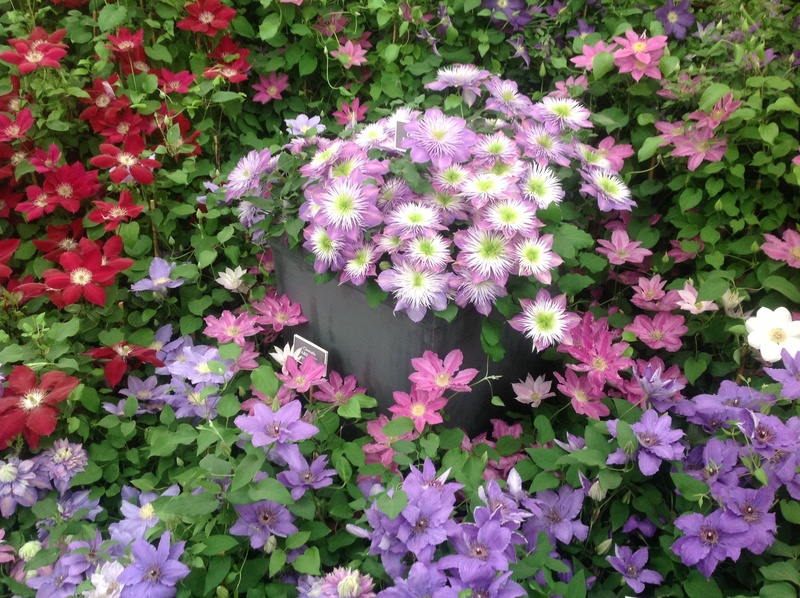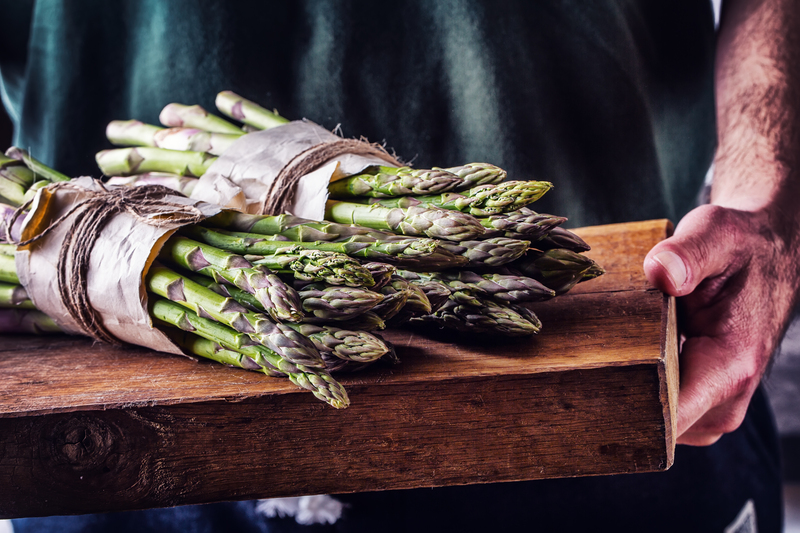Three Essential Steps for Creating a Garden You Can Rearrange Anytime
If you love gardening but find yourself wishing for more flexibility--or simply enjoy updating your garden design on a whim--then a rearrangeable garden might be just what you need. Imagine transforming your outdoor space as the seasons change, or whenever inspiration strikes. In this comprehensive guide, we will walk you through three essential steps for creating a garden you can rearrange anytime. Our aim is to make gardening more fun, less permanent, and endlessly adaptable, all while keeping your landscape beautiful.
Why a Rearrangeable Garden?
Before diving into the practical steps, let's examine why a moveable garden design is so valuable:
- Flexibility: A movable garden layout allows you to update the look of your space easily and frequently.
- Creativity: You can experiment with new configurations, colors, and plant combinations whenever you wish.
- Climate Adaptation: Easily relocate plants to maximize sun exposure, shade, or shelter from wind and rain.
- Practicality: Ideal if you rent your property or expect to move, as your garden can come with you!
- Seasonal Interest: Swap out seasonal plants with minimal effort, keeping your garden lively year-round.

Step 1: Use Containers and Portable Planters
The foundation of a versatile garden you can reorganize any time is the use of containers, portable planters, and other mobile planting solutions. This strategy offers flexibility, creativity, and practicality for gardeners of all experience levels.
Choosing the Right Containers
- Material: Select lightweight pots--plastic, fiberglass, or resin are excellent options over traditional terracotta or ceramic.
- Size and Shape: Mix and match sizes, but ensure they are large enough for root growth. Rectangular or square containers fit together nicely to reduce wasted space.
- Mobility: Look for containers with built-in wheels or use sturdy plant caddies to make moving easier. Consider collapsible fabric pots for low-cost, space-saving alternatives.
Portable Raised Beds and Modular Systems
- Raised Beds on Wheels: Add caster wheels to small, lightweight raised beds for maximum mobility. These are ideal for vegetable and herb gardens that may need to chase the sun.
- Vertical Gardens: Wall-mounted or freestanding vertical planters can be moved around to create living walls that suit your changing needs.
- Modular Planter Blocks: Stackable and interlocking containers offer endless possibilities for reconfiguration.
Smart Plant Selection for Containers
- Pick Plants That Thrive in Pots: Herbs, annual flowers, dwarf shrubs, and compact vegetables are top choices.
- Consider Root Space & Water Needs: Group plants with similar care requirements to avoid issues when rearranging.
- Adaptability: Opt for hardy, adaptable species that tolerate being moved and shifting sunlight conditions.
Tips: Be sure to use high-quality potting soil and ensure containers have proper drainage holes to keep plants healthy as you move them.
Step 2: Plan Flexible Pathways and Garden Structures
When crafting a garden you can reorganize easily, the layout of the space is as important as the plants themselves. Think about how people (and garden furniture or containers) will move through the space.
Create Loose and Movable Paths
- Gravel and Mulch: Use loose materials like pea gravel, bark chips, or crushed stone for paths, which can be easily shifted or reshaped as your design changes.
- Stepping Stones: Lay stepping stones on top of mulch or grass for an instant, moveable walkway. Adjust them as necessary when rearranging containers or beds.
- Modular Pavers: Snap-together or easily lifted pavers let you redefine routes and garden areas in minutes.
Lightweight and Temporary Garden Structures
- Portable Trellises and Obelisks: Use freestanding supports for climbing plants that you can move if you change the layout.
- Folding Screens and Arbors: These add vertical interest and privacy, but are simple to relocate or remove as your garden evolves.
- Temporary Fencing: Lightweight, removable fencing can help define garden zones without permanence.
Consider Drainage and Irrigation
- Flexible Irrigation Systems: Drip irrigation kits with quick-connect hoses are ideal; reposition emitters when shifting containers.
- Water Barrels on Wheels: Portable water solutions make watering your ever-changing layout a breeze.
By designing paths and using lightweight structures, you ensure that every aspect of your garden supports easy rearrangement. This gives your landscape endless potential for reinventing the look, flow, and feel.
Step 3: Master the Art of Layering and Grouping
One of the joys of a flexible garden design is the ability to combine, restyle, and group plants and decor in countless ways. Mastering the art of visual layering and grouping is key to achieving stunning, professional-looking results--no matter how many times you rearrange.
Group Plants by Theme and Function
- Color Blocks: Arrange pots with blooms or foliage of similar hues for a bold visual impact. Swap them each season or as plants fade.
- Sensory Zones: Combine fragrant, edible, or tactile plants in moveable clusters for unique "sensory corners."
- Herb or Vegetable Stations: Place edible plant groups close to the kitchen in summer, then move sensitive herbs indoors in winter.
Layer Heights and Textures for Visual Interest
- Tiered Arrangements: Place taller plants or containers at the back or center, surrounding them with smaller or trailing specimens for depth.
- Mix Textures: Combine spiky, broad-leaved, and delicate plants in containers to add richness--shuffle these pairings as you rearrange.
- Vary Container Heights: Use stands, stacked crates, or bricks to elevate some pots, creating a dynamic landscape.
Incorporate Portable Garden Accessories
- Movable Furniture: Outdoor chairs, benches, and tables on wheels let you realign seating to match your plant layout.
- Decor Accents: Lanterns, sculptures, fountains, and birdbaths can all be repositioned to refresh your garden's ambiance each season.
- Trellises and Plant Supports: Change the focal point by shifting these structures (and their climbing plants) around your space.
Pro Tip: Take a photo of new arrangements to experiment visually before moving heavy objects. Digital planning helps you preview and plan without the heavy lifting.
Additional Tips for Success
- Keep Plant Tags: When moving plants, retain their care instructions to avoid mistakes with sun, soil, or water needs.
- Monitor Microclimates: Areas of your garden may be warmer, cooler, shadier, or windier after rearranging. Observe and adjust plant placements as needed.
- Plan for Growth: Some plants will outgrow containers or need repotting annually--factor this into your flexible design.
- Weather Considerations: Secure tall or lightweight containers during storms; group them for wind protection if needed.
Remember: the secret to a garden you can reorganize anytime lies in planning for flexibility. The best rearrangeable gardens look intentional and cohesive even as elements change--let your creativity and practical needs drive your evolving design.

Frequently Asked Questions
Can I create a rearrangeable garden on a small balcony?
Absolutely! In fact, balconies and patios are perfect for temporary and modular garden designs because space is at a premium. Use railing planters, stackable containers, and vertical gardening techniques for maximum impact in compact spaces.
What types of plants are best for easy-moving gardens?
Choose compact, container-friendly plants such as herbs, annuals, ferns, succulents, dwarf shrubs, and most vegetables like lettuces or peppers. Avoid large, deep-rooted, or very heavy plants unless you use extra-large, wheeled pots.
How often should I rearrange my garden?
This is up to you! Some gardeners move things around seasonally, while others adapt the arrangement every few weeks for creative variety. Just be sure not to disrupt root systems too frequently, and always provide proper care as you transition plants.
Conclusion: Embrace the Freedom of a Rearrangeable Garden
By following these three essential steps for creating a garden you can rearrange anytime, you unlock creative freedom and adaptability in your outdoor space. Use containers and movable planters to keep your plants mobile, design flexible paths and lightweight structures for easy flow, and master grouping and layering to achieve beautiful, professional results.
Whether you have a large backyard, a cozy balcony, or something in between, a rearrangeable garden empowers you to refresh your space as often as you like. Flexibility, beauty, and practicality go hand in hand--making your garden a true reflection of your evolving style and needs.
Start your own versatile garden today and enjoy the fun and function of a landscape you can refresh as often as you wish!
Related Keywords:
- Flexible garden design
- Modular gardening ideas
- Easy to move garden
- Garden you can reorganize
- Portable garden layout
- Garden makeover tips
For more gardening tips and inspiration on creating outdoor spaces that move with you, check our blog regularly!



